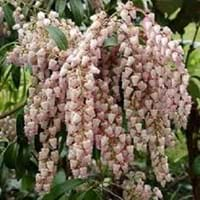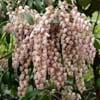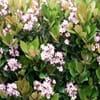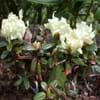Life Span
Perennial
Perennial
Type
Broadleaf Evergreen
Grass
Origin
Eastern Asia
United States, Northeastern United States, Mid-Atlantic United States, Southeastern United States, North-Central United States, Central United States, South-Central United States, Texas
Types
Mountain Fire , Variegata , Purity , Red Mill
Virginia water horehound
Number of Varieties
Not Available
Habitat
Lowland evergreen rainforest, Shaded sites
Along Railroads, Barren waste areas, Hill prairies, Mined land, Pastures, Roadsides, Rocky glades, Sandy areas, Upland, Upland clay prairies, Upland sand prairies, Upland sandy savannas, Upland savannas, Upland soils
USDA Hardiness Zone
5-9
5-8
AHS Heat Zone
Not Available
9 - 1
Sunset Zone
21,22
Not Available
Habit
Upright/Erect
Clump-Forming
Flower Color
White, Red, Light Pink, Hot Pink
Not Available
Flower Color Modifier
Bicolor
Bicolor
Fruit Color
Tan
Not Available
Leaf Color in Spring
Red, Green, Dark Green, Pink, Bronze
Green
Leaf Color in Summer
Green, Dark Green
Light Green
Leaf Color in Fall
Green, Dark Green
Orange, Tan, Brown
Leaf Color in Winter
Green, Dark Green
Tan, Sandy Brown
Leaf Shape
Lanceolate to elliptical
Grass like
Plant Season
Spring, Summer, Fall, Winter
Summer, Fall, Winter
Sunlight
Full Sun, Partial Sun, Partial shade
Full Sun, Partial Sun, Partial shade
Type of Soil
Loam
Loam, Sand
The pH of Soil
Acidic
Acidic, Neutral, Alkaline
Soil Drainage
Well drained
Well drained
Bloom Time
Early Spring, Late Winter
Early Fall, Fall
Tolerances
Deer resistant, Light Frost
Pollution, Drought
Where to Plant?
Ground
Ground
How to Plant?
stem tip cuttings
Divison, Root Division, Seedlings
Plant Maintenance
Medium
Medium
Watering Requirements
Keep the Soil well drained, Requires consistently moist soil
Average Water Needs, Medium
In Summer
Lots of watering
Lots of watering
In Spring
Moderate
Moderate
In Winter
Average Water
Average Water
Soil pH
Acidic
Acidic, Neutral, Alkaline
Soil Type
Loam
Loam, Sand
Soil Drainage Capacity
Well drained
Well drained
Sun Exposure
Full Sun, Partial Sun, Partial shade
Full Sun, Partial Sun, Partial shade
Pruning
Prune after flowering, Remove damaged leaves, Remove dead branches, Remove dead leaves
Remove damaged leaves, Remove dead branches, Remove dead leaves
Fertilizers
All-Purpose Liquid Fertilizer, fertilize in spring, fertilize in winter
All-Purpose Liquid Fertilizer
Pests and Diseases
dieback, Leaf spot, Mites, Soft scales
Red blotch
Plant Tolerance
Deer resistant, Light Frost
Drought
Flowers
Showy
Insignificant
Flower Petal Number
Single
Single
Foliage Texture
Medium
Fine
Foliage Sheen
Glossy
Matte
Attracts
Birds, Butterflies, Hummingbirds, Moths
Birds, Butterflies
Allergy
Not Available
Pollen
Aesthetic Uses
Beautification, Cottage Garden, Ornamental use, Showy Purposes, Wild gardens
Not Used For Aesthetic Purpose
Beauty Benefits
Not Available
Not Available
Edible Uses
No
Insignificant
Environmental Uses
Air purification
Air purification, Food for birds, Wildlife
Medicinal Uses
No Medicinal Use
Back pain, Diarrhea, Frostbite, Itching, Piles, Sore Eyes, Sore throat
Part of Plant Used
Not Applicable
Root, Seeds, Stem
Other Uses
Not Available
Cattle Fodder, Used As Food, Used as Ornamental plant
Used As Indoor Plant
No
No
Used As Outdoor Plant
Yes
Yes
Garden Design
Feature Plant, Foundation, Hedges, Mixed Border, Screening, Wind Break, Topiary, Bonsai, Espalier
Dried Flower/Everlasting, Wildflower
Botanical Name
PIERIS japonica
ANDROPOGON virginicus
Common Name
Japanese Andromeda
Broomsedge, Broomsedge Bluestem
In Hindi
Japanese pieris
Broomsedge grass
In German
Japanese pieris
broomsedge Gras
In French
Japanese pieris
broomsedge herbe
In Spanish
Japanese pieris
hierba Broomsedge
In Greek
Japanese pieris
Broomsedge γρασίδι
In Portuguese
Japanese pieris
Broomsedge grama
In Polish
Japanese pieris
Broomsedge trawy
In Latin
Japanese pieris
Broomsedge herba
Phylum
Magnoliophyta
Magnoliophyta
Class
Magnoliopsida
Liliopsida
Clade
Angiosperms, Asterids, Eudicots
Angiosperms, Commelinids, Monocots
Tribe
Lyonieae
Andropogoneae
Subfamily
Vaccinioideae
Panicoideae
Number of Species
Not Available
Not Available
Importance of Japanese Pieris and Broomsedge
Want to have the most appropriate plant for your garden? You might want to know the importance of Japanese Pieris and Broomsedge. Basically, these two plants vary in many aspects. Compare Japanese Pieris and Broomsedge as they differ in many characteristics such as their life, care, benefits, facts, etc. Every gardener must at least have the slightest clue about the plants he wants to plant in his garden. Compare their benefits, which differ in many ways like facts and uses. The medicinal use of Japanese Pieris is No Medicinal Use whereas of Broomsedge is Back pain, Diarrhea, Frostbite, Itching, Piles, Sore Eyes and Sore throat. Japanese Pieris has beauty benefits as follows: Not Available while Broomsedge has beauty benefits as follows: Not Available.
Compare Facts of Japanese Pieris vs Broomsedge
How to choose the best garden plant for your garden depending upon its facts? Here garden plant comparison will help you to solve this query. Compare the facts of Japanese Pieris vs Broomsedge and know which one to choose. As garden plants have benefits and other uses, allergy is also a major drawback of plants for some people. Allergic reactions of Japanese Pieris are Not Available whereas of Broomsedge have Pollen respectively. Having a fruit bearing plant in your garden can be a plus point of your garden. Japanese Pieris has no showy fruits and Broomsedge has no showy fruits. Also Japanese Pieris is not flowering and Broomsedge is not flowering . You can compare Japanese Pieris and Broomsedge facts and facts of other plants too.





